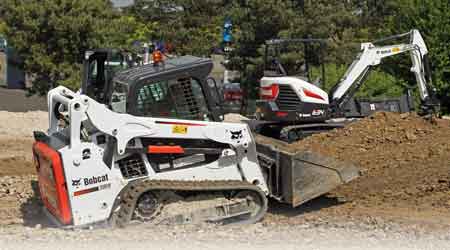 Comprehensive training can ensure that workers using rental equipment, including skid steer loaders, remain safe on the job site.ROMAN KOROTKOV / SHUTTERSTOCK.COM
Comprehensive training can ensure that workers using rental equipment, including skid steer loaders, remain safe on the job site.ROMAN KOROTKOV / SHUTTERSTOCK.COMEquipment Training Options To Minimize Risk, Maximize Safety
By matching department needs to available resources, managers can protect workers on the work site
Rental equipment — generators, lifts, and specialized tools, among them — have become essential tools for maintenance and engineering managers looking to supplement a department’s in-house arsenal of tools and equipment. But for as diverse as these products are, they have one thing in common — it is essential that technicians understand and practice the safest and most effective ways to use them.
To ensure this approach happens, managers need to identify address key issues related to rental equipment focusing on effective training options, staff training needs and steps to put equipment training into action to ensure the safety of equipment users.
Training options
Suppliers of maintenance and construction rental equipment offer an array of products, from aerial lifts to trucks and welders. With this many choices and with each product having unique safety issues, controls, and operating methods, managers must ensure that operators — whether their own or vendors — are very familiar with the equipment before using it.
Some manufacturers and distributors offer in-the-seat training for items such as forklifts and aerial lifts and hands-on training for items such as generators, power tools and welders. They combine this training with classroom lectures and self-paced and online training.
Powered rental equipment — including generators, aerial lifts, digging and grading equipment, welders, chainsaws, pressure washers, floor strippers, augers, and pipe tools — offer technicians mechanical advantages that make them far more appealing than manual methods.
In the hands of untrained operators, things can go sideways very quickly, given the added leverage and in some cases very high horsepower, torque and rotational speed. Technicians using this equipment must have effective training to safely and productively operate and maintain the equipment in order to avoid injury, damage to property, and damage to the equipment.
While on-the-job training dominates the training plans in maintenance departments, managers are more often recognizing the advantages of combining on-the-job training with one or more other options. Managers have two issues to consider when planning training programs — the choices of instructor and training aids. Instructor options include:
• in-house lecture training by the human resources staff
• in-house, self-paced training by staff or an outside vendor
• online, self-paced training
• vendor location training using lecture, self-paced and online options.
One effective way to train operators to use rental equipment is for the vendor to bring the equipment to the job site to demonstrate proper preparation and safety checks and to ensure all controls and safety devices are in place and working. The demonstration also can show operation of the equipment on the terrain in question, shut-down and post-operation checks and filling out the operator’s report. The vendor’s instructor also can demonstrate the equipment’s full range of capabilities.
Following the demonstration, the trainees operate the equipment under the trainer’s supervision and guidance long enough to become familiar with its capabilities and limitations. For example, a truck crane operated without outriggers is prone to tipping when the operator swings the load away from its centerline.
The trainer also can review the operating and maintenance manual with the trainees, emphasizing safety controls and procedures, and the demonstration can help a manager evaluate the equipment and its capabilities before deciding whether to purchase it.
The training aids that have proven most effective in supporting traditional training methods include these:
• An experienced technician demonstrating proper equipment use while directing the trainee on the job • lectures using text guides
• lectures using video aids, such as flip charts, slides, computers and films
• video and audio training aids, including ebooks and audiobooks; some ebooks are now capable of both video and audio output.
Related Topics:











